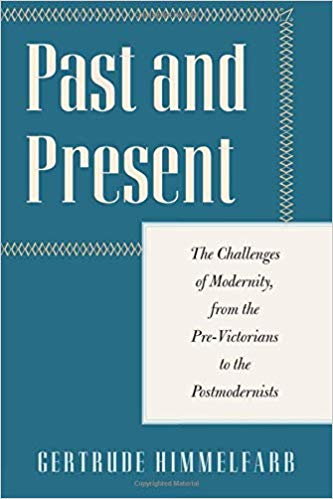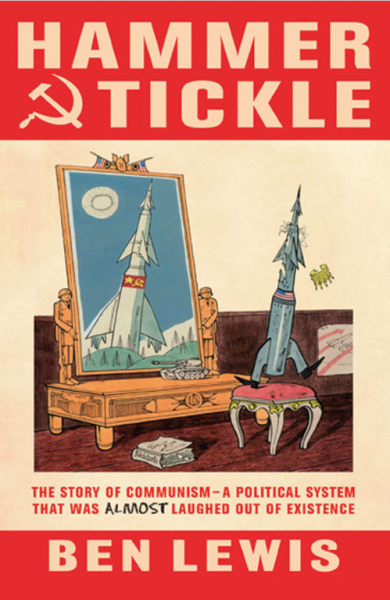Someone on SSC Discord summarized James Scott’s Against The Grain as “basically 300 pages of calling wheat a fascist”. I have only two qualms with this description. First, the book is more like 250 pages; the rest is just endnotes. Second, “fascist” isn’t quite the right aspersion to use here.
Against The Grain should be read as a prequel to Scott’s most famous work, Seeing Like A State. SLaS argued that much of what we think of as “progress” towards a more orderly world – like Prussian scientific forestry, or planned cities with wide streets – didn’t make anyone better off or grow the economy. It was “progress” only from a state’s-eye perspective of wanting everything to be legible to top-down control and taxation. He particularly criticizes the High Modernists, Le Corbusier-style architects who replaced flourishing organic cities with grandiose but sterile rectangular grids.
Against the Grain extends the analysis from the 19th century all the way back to the dawn of civilization. If, as Samuel Johnson claimed, “The Devil was the first Whig”, Against the Grain argues that wheat was the first High Modernist.
Scott Alexander, “Book Review: Against The Grain“, Slate Star Codex, 2019-10-15.
January 3, 2020
QotD: Against The Grain
January 2, 2020
Five types of books for better woodworking
Rex Krueger
Published 1 Jan 2020Some of the best (and most under-rated) books about woodwork.
More video and exclusive content: http://www.patreon.com/rexkrueger
Single-Topic Books (Amazon links are affiliate):
Making and Mastering Wooden Planes (Finck) [In print]: https://bit.ly/2Q7Pube
Woodwork as a System:
Japanese Woodwork Tools: Their Tradition, Spirit and Use (Odate) [In print]: https://amzn.to/36kLWIB
Hands Employed Aright: The Furniture Making of Jonathan Fisher (Klein) [In print]: https://bit.ly/2ZDgMtq
Furniture Collections:
The Pine Furniture of Early New England (Kettell) [In print, but cheaper used]: https://amzn.to/36axW3N
By Shaker Hands (Sprigg) [Out of print, but easy to find and cheap]: https://amzn.to/2MHuOor
Early American Antique Country Furnishings (Neumann) [Out of print, but cheap and easy to find]: https://amzn.to/2Qv7cEF
Subversive Books:
Make a Chair From a Tree: An Introduction to Working Green Wood (Alexander) [Out of print; hard to find]
Make a Joint Stool From a Tree (Alexander, Follansbee) [Updated version of Alexander’s other book; In print]: https://bit.ly/37nJKA1
Reference Books:
Understanding Wood Finishing (Flexner) [In print]: https://amzn.to/2tbRVAK
With the Grain: A Craftsman’s Guide to Understanding Wood (Becksvoort): [In print]: https://bit.ly/2ZCQQOz
Other Favorites:
Country Furniture (Watson) [In print, but MANY used copies out there]: https://amzn.to/369Zvdr
The Practical Woodturner (Pain) [Out of print but cheap and easy to find]: https://amzn.to/35aMVtp
The Practical Woodworker (Jones) [In Print. Huge and cheap]: https://amzn.to/2rE31hi
The Handplane Book (Hack) [In print]: https://amzn.to/37n6Bvv
Workbenches: From Design and Theory to Construction and Use (Schwarz) [In print]: https://amzn.to/35bpcZS
Plans, t-shirts, and hoodies: http://www.rexkrueger.com/store
Get my woodturning book: http://www.rexkrueger.com/book
Follow me on Instagram: @rexkrueger
Divine Caesar Augustus, Master of Propaganda – January 1, 2020 – TimeGhost of Christmas Past Day 9
TimeGhost History
143K subscribers
Dissent This
Julius Caesar was already associated with the Divine during his life. But two years after his death, he was officially declared so by the Senate of Rome. Very much to benefit of his cousin, Octavian.Join us on Patreon: https://www.patreon.com/TimeGhostHistory
Hosted by: Indy Neidell
Written by: Joram Appel
Directed and Produced by: Spartacus Olsson and Astrid Deinhard
Executive Producers: Bodo Rittenauer, Astrid Deinhard, Indy Neidell, Spartacus Olsson
Creative Producer: Joram Appel
Post-Production Director: Wieke Kapteijns
Research by: Joram Appel
Edited by: Karolina Dołęga
Sound design: Marek KamińskiSources:
Wellcome Library no. 42647i
Calendar by Lorena Salagre from the Noun ProjectMusic from Epidemic Sound Library:
“A Sleigh Ride Into Town” – Howard Harper-Barnes
“Ancient Saga” – Max Anson
“Thunder Storm 01” – Fredrik EkstromA TimeGhost chronological documentary produced by OnLion Entertainment GmbH.
From the comments:
TimeGhost History
1 week ago
Happy New Year! We have some amazing videos coming up in the new year, but not before we publish the final instalment of our TimeGhost of Christmas Past episode. This one is my personal favourite, as I’m a huge fan of the late Roman Republic and early Empire as a historical study object. So when we were dividing the Christmas episodes among the research team, I fought for this one to be on the list. I had a blast writing it (surprisingly, I don’t get to write about Caesar that often for the WW2 Channel) and I hope you all enjoy watching it.
Cheers,
Joram
The 2010s … the best decade (so far) in human history
Matt Ridley explains why, despite all the doom and gloom in the daily headlines, the last ten years have been the best by almost any measure:
Let nobody tell you that the second decade of the 21st century has been a bad time. We are living through the greatest improvement in human living standards in history. Extreme poverty has fallen below 10 per cent of the world’s population for the first time. It was 60 per cent when I was born. Global inequality has been plunging as Africa and Asia experience faster economic growth than Europe and North America; child mortality has fallen to record low levels; famine virtually went extinct; malaria, polio and heart disease are all in decline.
Little of this made the news, because good news is no news. But I’ve been watching it all closely. Ever since I wrote The Rational Optimist in 2010, I’ve been faced with “what about …” questions: what about the great recession, the euro crisis, Syria, Ukraine, Donald Trump? How can I possibly say that things are getting better, given all that? The answer is: because bad things happen while the world still gets better. Yet get better it does, and it has done so over the course of this decade at a rate that has astonished even starry-eyed me.
Perhaps one of the least fashionable predictions I made nine years ago was that “the ecological footprint of human activity is probably shrinking” and “we are getting more sustainable, not less, in the way we use the planet”. That is to say: our population and economy would grow, but we’d learn how to reduce what we take from the planet. And so it has proved. An MIT scientist, Andrew McAfee, recently documented this in a book called More from Less, showing how some nations are beginning to use less stuff: less metal, less water, less land. Not just in proportion to productivity: less stuff overall.
This does not quite fit with what the Extinction Rebellion lot are telling us. But the next time you hear Sir David Attenborough say: “Anyone who thinks that you can have infinite growth on a planet with finite resources is either a madman or an economist”, ask him this: “But what if economic growth means using less stuff, not more?” For example, a normal drink can today contains 13 grams of aluminium, much of it recycled. In 1959, it contained 85 grams. Substituting the former for the latter is a contribution to economic growth, but it reduces the resources consumed per drink.
As for Britain, our consumption of “stuff” probably peaked around the turn of the century — an achievement that has gone almost entirely unnoticed. But the evidence is there. In 2011 Chris Goodall, an investor in electric vehicles, published research showing that the UK was now using not just relatively less “stuff” every year, but absolutely less. Events have since vindicated his thesis. The quantity of all resources consumed per person in Britain (domestic extraction of biomass, metals, minerals and fossil fuels, plus imports minus exports) fell by a third between 2000 and 2017, from 12.5 tonnes to 8.5 tonnes. That’s a faster decline than the increase in the number of people, so it means fewer resources consumed overall.
H/T to Damian Penny for the link.
Tank Chats #57 Churchill AVRE | The Funnies | The Tank Museum
The Tank Museum
Published 20 Sep 2018Another episode in the Tank Chats Funnies Specials, with David Fletcher looking at the weird and wonderful vehicles of 79th Armoured Division led by Major General Percy Hobart, known as “Hobart’s Funnies”.
The Churchill AVRE (Armoured Vehicle Royal Engineers). The Churchill was the basis for a number of Funnies. David Fletcher looks at the Fascine, Bobbin, Small Box Girder bridge, Bullshorn plough, Conger, the Churchill ARK and Bridgelayer.
Support the work of The Tank Museum on Patreon: ► https://www.patreon.com/tankmuseum
Or donate http://tankmuseum.org/support-us/donateVisit The Tank Museum SHOP: ► https://tankmuseumshop.org/
Twitter: ► https://twitter.com/TankMuseum
Tiger Tank Blog: ► http://blog.tiger-tank.com/
Tank 100 First World War Centenary Blog: ► http://tank100.com/ #tankmuseum #tanks #tankchats
QotD: Anime
From a conversation elsewhere:
Friend A: “Anime by itself isn’t supposed to be cringy. There’s lots of good anime out there.”
Friend B: “Intentional or not, that’s the effect on me.”
Friend A: “Well, what anime have you watched?”
Friend B: “Let’s see… Pantyflash Crisis, Fanservice High School, and Animal-Eared Preteens, I believe.”
I laughed so hard I nearly lost continence.
Tamara Keel, “Overheard Online…”, View From The Porch, 2019-10-16.
January 1, 2020
Dim views of polyamory
Claire Lehmann responded to a Tweet from @shamshi_adad on the topic of polyamory:
With spreadsheets https://t.co/vlJqICLWUj
— Claire Lehmann (@clairlemon) December 30, 2019
… which got some amusing responses:
Polyamory is the “parents aren’t home let’s eat all the candy” of sex.
A phase whose unwisdom will be soon understood.
— 🤖🦉Cyberowl 🦉🤖 (@Supreme_Owl_FTW) December 30, 2019
It's true. I had a poly friend once. The rules were Talmudic. I didn't understand how that was freeing. But she beat me over the head with her dog-eared copy of "Sex at Dawn" and assured me it was.
— Stephen Wood (@SlideQuintus) December 30, 2019
Polygyny: Just harem girls sharing an alpha.
Polyandry: Only 1 guy is getting laid, the rest are just there as utilities and servants.
Neither arrangement is a good deal for anyone except that one dude who's getting laid.
— Irreverant (@XTheIrreverantX) December 30, 2019
Let there be LIGHT! – December 31st – TimeGhost of Christmas Day 8
TimeGhost History
Published 31 Dec 2019The electrical age was ushered in by Thomas Edison’s illumination of Menlo Park 140 years ago. For the first time, electrical lighting was demonstrated to a public audience.
Join us on Patreon: https://www.patreon.com/TimeGhostHistory
Hosted by: Indy Neidell
Written by: Tom Maeden and Spartacus Olsson
Directed by: Spartacus Olsson and Astrid Deinhard
Executive Producers: Bodo Rittenauer, Astrid Deinhard, Indy Neidell, Spartacus Olsson
Creative Producer: Joram Appel
Post-Production Director: Wieke Kapteijns
Research by: Tom Maeden
Edited by: Mikołaj Cackowski
Sound design: Marek KamińskiColorization by:
Dememorabilia – https://www.instagram.com/dememorabilia/Soundtracks from Epidemic Sound:
Howard Harper-Barnes – “A Sleigh Ride Into Town”
Traditional – “Carol of the Bells”A TimeGhost chronological documentary produced by OnLion Entertainment GmbH.
From the comments:
TimeGhost History
4 hours ago
On the eighth day of Christmas Thomas Alva Edison said: let there be light. Now, as we say say in the video, we know that Edison was not the only inventor of incandescent light, perhaps not even the inventor at all. But as with so many other things he brought the world, he was the first one to make it practicable, and perhaps more importantly; make it popular.It’s hard to fathom how monumental to humanity this day, 31st of December, 1879 is — the world literally changed forever with the flick of a switch. Our work behavior, or sleeping patterns, our leisure time, socializing, sex, media, industry, cooking, aesthetics … well more or less everything started to change on this day. In 2019 hardly anything we do is possible without it — especially not watching this video, which after all is brought to your eyes by one of many, many derivative innovations of the incandescent light bulb. In fact it’s 140 years later and we are still researching the depths of the change that incandescent light brought upon humanity.
Most of us take it for granted by now, artists celebrate it, entire industries depend on it, Luddites deplore it, environmental studies are showing that it might be harmful to other animals, neurologists are researching the effects of changed sleeping patterns on your brains, the production of energy we need to light our world has contributed to dramatic environmental changes on the entire planet, and the innovations coming from it just keep on pouring out of labs like Menlow Park every day. What do you think?
Happy New Year! May it be enlightening.
Communist jokes through the ages
At Catallaxy Files, Steve Kates recently read Hammer and Tickle: A History of Communism Told Through Communist Jokes by Ben Lewis:
It looks at the jokes themselves; the evolution of these jokes as communism aged and new leaders took over; it looks at the different kinds of jokes told in different communist countries; it examines the fate of those who told such jokes and the difference in the fate of those who made such jokes depending on who was the leader of the Party; it asks whether such jokes helped the communists consolidate power or whether they helped bring communism down; it looks into the difference between telling anti-Nazi jokes in Nazi Germany versus telling anti-communist jokes in communist countries; it asks about the psychology of those who told such jokes and whether they helped relieve tensions; and much else. But I will say this, some of I found really funny. This is my favourite.
Khrushchev is walking through the Kremlin, getting worked up about the Soviet Union’s problems, and spits on the carpet in a gesture of disgust.
“Behave yourself, Nikita Sergeyevich,” admonishes the aide. “Remember that the great Lenin walked through these halls!”
“Shut up,” responds Khrushchev. “I can spit all I like here; the Queen of England gave me permission!”
“The Queen of England?”
“Yes! I spat on her carpet in Buckingham Palace too, and she said, ‘Mr Khrushchev, you can do that all you like in the Kremlin if you wish, but you can’t behave like this here …'”
Easy to see this one added to the Donald Trump canon and now that I have pointed it out, I expect it to be.
I therefore thought I might have a look at what passes for Donald Trump jokes. And google all you like, there really is not much although there was this: Donald Trump Jokes. None were funny but I did like this:
Where’s Donald Trump’s favorite place to shop?
Wall-mart!
Mere pun though it is, it seems appropriate. At least it’s policy-related and almost entirely a joke that could only be told about Trump. The rest are re-treads, never specifically about anything related to Trump himself and his policies, but are almost entirely forms of insult than anything with any associated wit or insight. The most interesting part to me about the communist jokes was that the ones that became acceptable were those directed at the failures of communism relative to the promises that had originally been made. Lots like that. The way to end up in the gulag was to tell jokes about actual party leaders, especially Lenin and Stalin. Very few like that.
I rather liked the one from the Amazon page for the Kindle edition: “Q: Why, despite all the shortages, was the toilet paper in East Germany always 2-ply? A: Because they had to send a copy of everything they did to Moscow.”
The Day The Gauge Changed
The History Guy: History Deserves to Be Remembered
Published 16 Jun 2018The History Guy remembers the 1886 Southern Railroad Gauge Change, an important moment in railroad history.
The photographs used in the episode are Public Domain images from the age of steam. As photos of actual events are sometimes not available, I will often use photographs of similar events and objects for illustration.
The economic analysis mentioned in the episode is available here: https://www.hbs.edu/faculty/Pages/ite…
Patreon: https://www.patreon.com/TheHistoryGuy
The History Guy: Five Minutes of History is the place to find short snippets of forgotten history from five to fifteen minutes long. If you like history too, this is the channel for you.
Awesome The History Guy merchandise is available at:
https://teespring.com/stores/the-hist…The episode is intended for educational purposes. All events are presented in historical context.
#railroad #ushistory #thehistoryguy
QotD: “Bin End” sales
I was amused this week to see to see a sign outside my local Wine Rack store which read “Sawmill Creek Bin End Sale.” Bin end usually means the last few bottles or cases of the lot. For a wine that arrives in Canada by the boatload, “bin end” sounds a bit far fetched. Then again, “Tanker End Sale” doesn’t sound quite as dignified.
Richard Best, The Frugal Oenophile Newsletter, 2005-07-13.













